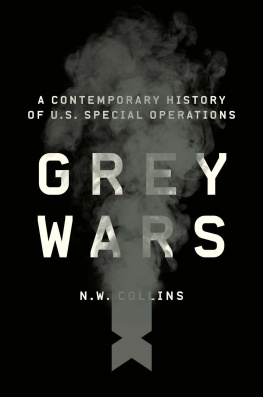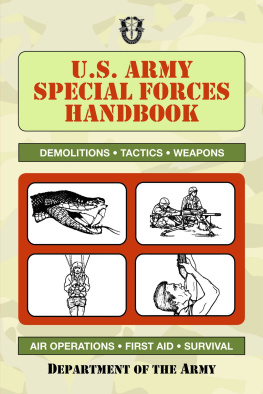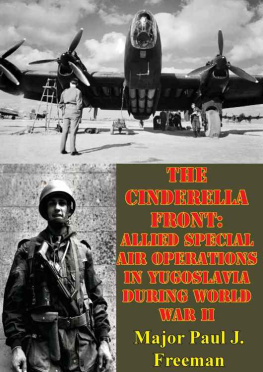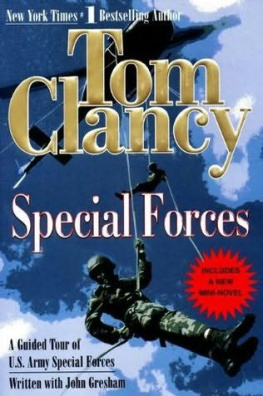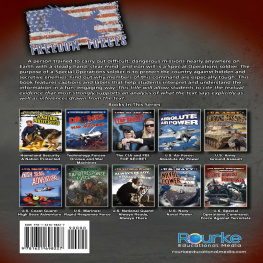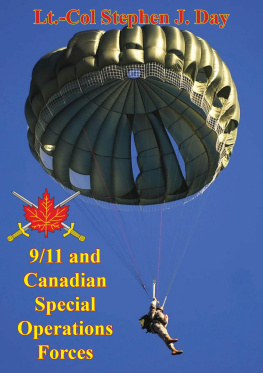

This edition is published by PICKLE PARTNERS PUBLISHINGwww.picklepartnerspublishing.com
To join our mailing list for new titles or for issues with our books picklepublishing@gmail.com
Or on Facebook
Text originally published in 1988 under the same title.
Pickle Partners Publishing 2014, all rights reserved. No part of this publication may be reproduced, stored in a retrieval system or transmitted by any means, electrical, mechanical or otherwise without the written permission of the copyright holder.
Publishers Note
Although in most cases we have retained the Authors original spelling and grammar to authentically reproduce the work of the Author and the original intent of such material, some additional notes and clarifications have been added for the modern readers benefit.
We have also made every effort to include all maps and illustrations of the original edition the limitations of formatting do not allow of including larger maps, we will upload as many of these maps as possible.
A STRATEGIC ANALYSIS OF U.S. SPECIAL OPERATIONS CONDUCTED DURING THE KOREAN CONFLICT, 1950-1953
By
Major Steve A. Fondacaro
TABLE OF CONTENTS
Contents
ABSTRACT
This study analyzes the strategic effectiveness of special operations conducted by the Far East Command (FECOM) and the Central Intelligence Agency (CIA) in Korea during the Korean Conflict from 1950 to 1953. Each organizations effectiveness is determined by examining the areas of strategy, organization and operations. Special operations as defined in Joint Chiefs of Staff Publication Number 2, Unified Action Armed Forces (UNAAF) was the standard by which operations were selected for examination. The study answers four questions: 1) What were the U.N. Command strategic objectives within the Korean theater, and how did these change?, 2) How these changing strategic objectives development and coordination of special operations objectives, forces and headquarters?, 3) What did U.S. special operations in Korea accomplish strategically? 4) What conclusions can be drawn from U.S. special operations forces effectiveness or ineffectiveness in Korea?
FECOM special operations were limited to partisan operations and psychological operations. The partisans consisted of anti-communist North Koreans organized and led by U.S. cadre beginning in January, 1951. Psychological operations were conducted continuously from July, 1950 by a separate staff element whose capabilities expanded dramatically during the course of the conflict. CIA operations within Korea consisted of intelligence gathering and special (or covert) activities controlled from headquarters in Japan. CIA operations remained autonomous of FECOM control throughout the conflict. The control issue was the source of bureaucratic conflict that inhibited operational coordination between FECOM and CIA throughout the conflict.
The study concludes that lack of strategic objectives and limited capability rendered FECOM operations in Korea strategically insignificant. CIA operations were well planned and successfully achieved well-defined strategic objectives in support of the war effort in Korea. This experience highlights existing operational coordination problems between military and CIA special operations. Additionally, the use if of indigenous forces in Korea foreshadow problems that resurface on larger scale in Viet-Nam, and may apply to current operations in Central America.
Acknowledgement
I owe a great deal of thanks to ray thesis committee, whose patient supervision throughout a particularly difficult writing phase is, in large part, responsible for the successfully finished product. In particular, I am indebted to Dr. Jack J. Gifford for his frank critiquers and quality analysis. Majors Richard V. Barbuto and Terry A. Griswold provided instructive comments and sustained encouragement that saw me through the most difficult periods.
I wish to thank Mr. Joseph C. Goulden, author of Korea : The Untold Story of the War , and COL Rod Paschall and Dr. Richard J. Somers of the Army Military History Institute for the valuable time they spent over the phone providing critical information and advice. I would also like to thank my academic evaluator, Major Richard McKenney whose timely assistance and genuine concern at critical moments kept the research process going.
Finally, I would like to thank my wife and my son, for their patience, understanding and encouragement throughout the year.
List of Figures
Figure 4-1. Central Intelligence Agency Organization, 1950
Figure 4-2. CIA/FECOM Relationship, 1951-53
Figure 4-3. Psychological Warfare Division, G-3, EUSAK, 1951
Figure 4-4. Psychological Warfare Section, Special Staff, FECOM, 1951
Figure 4-5. Attrition Section, Miscellaneous Division, G-3, EUSAK, (January, 1951)
Figure 4-6. Miscellaneous Group, 8240 AO, G-3, EUSAK (May, 1951)
Figure 4-7. Far East Command/Liaison Detachment (FEC/LD (K), 8240 AU (December, 1951)
Figure 4-8. Combined Command for Reconnaissance Activities (CCRAK), 8242 AU, FECOM (October, 1952)
Figure 4-9. CCRAK, 8242 AU, Army Forces Far East (AFFE), FEC/UNC (December, 1952)
Figure 5-1. Operational Plan One, 1951
Figure 5-2. Percentages of Partisan Actions by Grid Squares, 1951-1953
Figure 5-3. Operational Areas for FECOM Partisan Plans, 1953
Figure 5-4. FECOM Partisan Airborne Operations, 1951-1953
CHAPTER 1 INTRODUCTION
We dont need to go back and look at things that happened two years ago. Gen. David C. Jones Chmn, JCS, 1982
The purpose of this study is to analyze the United Nations Command (UNC) strategy for the conduct of special operations and the subsequent creation and use of special operations forces (SOP) during the Korean Conflict from 1950 to 1953.
Research into the subject of special operations is unique for a number of reasons. First, relatively little primary and secondary literature and data was available to researchers until a large scale declassification of Korean Conflict era Far East Command (FECOM) documents took place as a result of the Freedom of Information Act in 1980. Second, though some records, classified or otherwise, do exist, there are relatively few historical works that directly address special operations. Third, the definition of exactly what comprises special operations changed continuously over the years after World War II when the term first appeared officially to describe operations conducted by the Office of Strategic Services (OSS). It was then that a need to differentiate between special and conventional operations first appeared. Finally, from its early beginnings in the OSS, there developed a reluctance on the part of military and political leaders to associate themselves with special, or black operations as they were sometimes referred to. This is understandable since these leaders were responsible for explaining these activities, to Congress and the American public if and when exposed. Given the fact that by their very nature, these operations lie well outside the boundaries of public law and the international laws of war, this responsibility is considered political suicide. President Carter is a recent example of this. This discourages study of lessons learned or development of a comprehensive doctrine for the use of special operations in the future.
This attitude remains prevalent as the quote at the beginning of the chapter reflects. General Jones was responding to a reporters question concerning the appointment of the Holloway Commission to investigate the planning and conduct of the failed Iran Hostage Rescue attempt in April, 1980. Unlike the former JCS chairman, I believe that the only way to preclude recurrences of this disaster is to dissect past special operations to a degree at least commensurate to that of conventional operations. The lessons learned from past U.S. conduct of special operations constitute the foundation of any coherent reform program. Therefore, frank confrontation and resolution of U.S. planning and execution failures must be the objective of any reform-oriented study.
Next page



